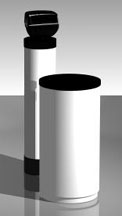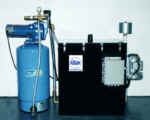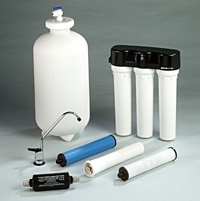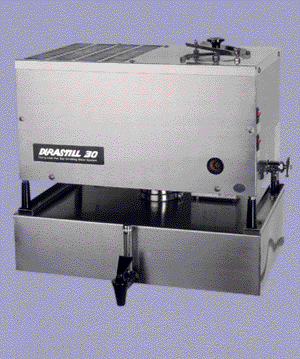Treatment
process
|
What it does
|
Contaminants
Removed/Altered
|
|
Filtration

|
By passing water
through a cartridge, granular media or other device, contaminants are
subtracted from the water to make it cleaner. In some cases this is a
"straining" effect; in other cases the contaminants are removed by
adsorption- the contaminants have an attraction to
the surface of the filter.
Often,
minerals such as iron and manganese are oxidized prior to filtration in
order to create large enough particles to filter. In addition, pH
changes may be needed.
Already have a cartridge filter that
requires replacement cartridges? Check out our store WellWaterProducts.com
. We stock some cartridges that are a little hard to find and on some
products our pricing is better than the big-box stores.
|
Iron, manganese,
arsenic, silt, sand, organics, some heavy metals, radon, cysts
|
|
Ion
exchange (softening, etc)

|
As water runs through a resin in a vessel,
charged
electrical particles (ions) are exchanged for other ions which are more
desirable. Often this process can be reversed by regeneration of the
resin.
In industrial settings, a very similar
process is used to make ultra high purity water. Most residential and
commercial applications are oriented toward nuisance mineral control
though we have had some success reducing arsenic and radium with this
method.
|
Hardness
(calcium, magnesium), iron, manganese are commonly removed. Other ions
such as arsenic and nitrates can be removed this way.See how a softener
works.
|
|
Oxidation

|
By introducing oxidizer such as chlorine,
ozone, oxygen, or
ozone (there are others too), ions' electrical charges change (get more
positive). This is often done to prepare for filtration. Sometimes
oxidation alone is sufficient to manage hydrogen sulfide (a gas which
has a rotten egg smell).
|
Does not
technically remove anything; alters water chemistry.
|
|
pH
correction
|
By dissolving an alkaline (basic) material
into water, low
pH (<6.5 units) can be adjusted to prevent corrosion. Often
accomplished with a calcite filter/contactor which uses clean lime to
correct pH.
Sometimes
high pH's are controlled by acid injection. This may be done for scale
control though very seldom in our service area.
|
Usually
does not technically remove anything; alters water chemistry-except via
air stripping (see below). Controlling low pH often reduces levels of
leached copper and lead in plumbing systems.
|
|
Aeration
(air stripping)

|
By forcing high volumes of air through water
dissolved
gasses and other volatile compounds are liberated and vented away. (If
you aerated carbonated soda, it would become very flat)
|
Radon,
volatile organics, can raise pH, hydrogen sulfide
|
|
Disinfection

|
Adding a disinfectant (chlorine, ozone,
ultraviolet light)
kills or disables microbes to make water safer to drink.
|
Kills
microbes, or in the case of ultraviolet, prevents multiplication
|
|
Reverse
osmosis (and other membranes)

|
Water is passed by a very fine filter
(membrane) under
pressure. While water is squeezed through, many contaminants are
flushed to waste. Often used as a drinking water solution. Typically
silt, manganese, iron and hardness are removed prior to reaching the
membrane in order to prevent fouling.
|
Ions:
sodium, chloride, lead, nitrates, arsenic, etc.
|
|
Distillation

|
By boiling water, vapor is formed and
condensed. The
contaminants are left in the boiling chamber.
|
Distillation
removes nearly all contaminants from water but is rather
energy-intensive.
|
|
Sequestration

|
By surrounding ions with a polymer, they are
shielded from
posing problems. Often accomplished by injecting a solution into the
water. Can also help with corrosion control
|
Can be
used to control mineral staining and corrosion
|
|
Magnetic
devices

|
Supposedly alter the structure of water.
Some claim that
they help with scale control. We have seen no evidence to support these
claims.
|
This page reflects our
feelings on this and similar matters.
|














